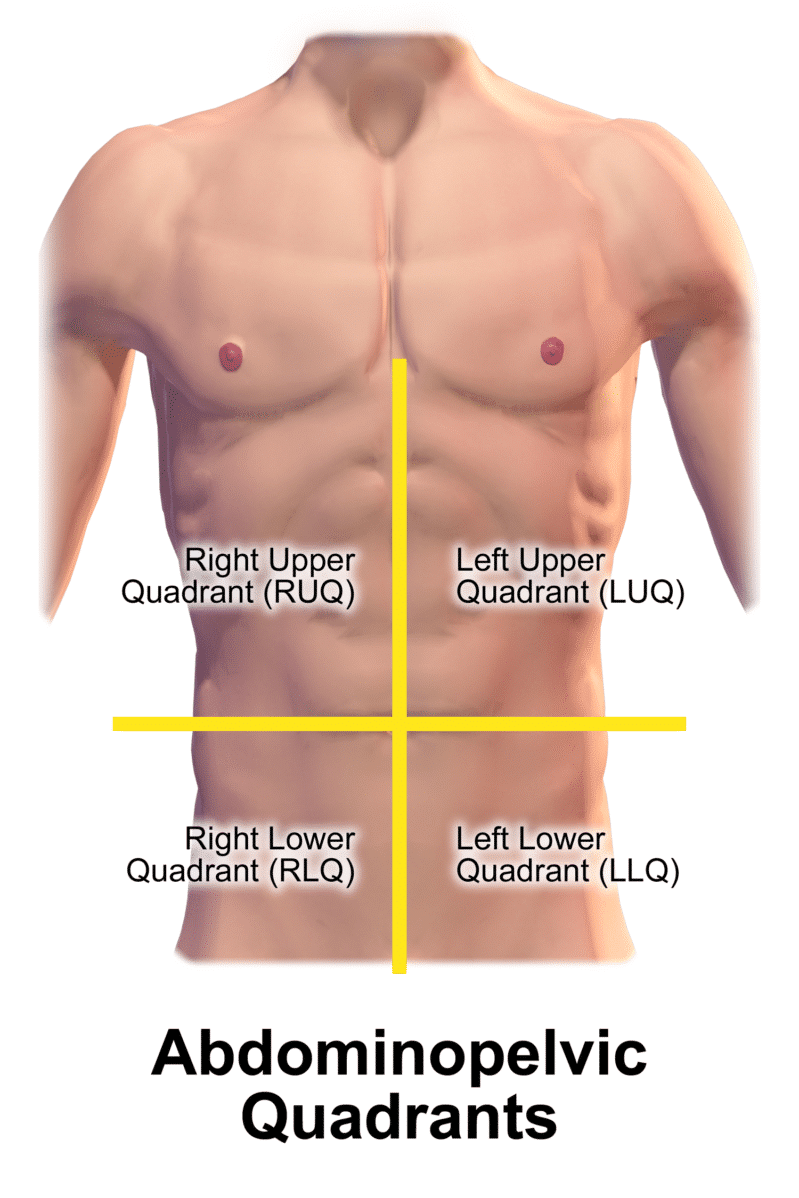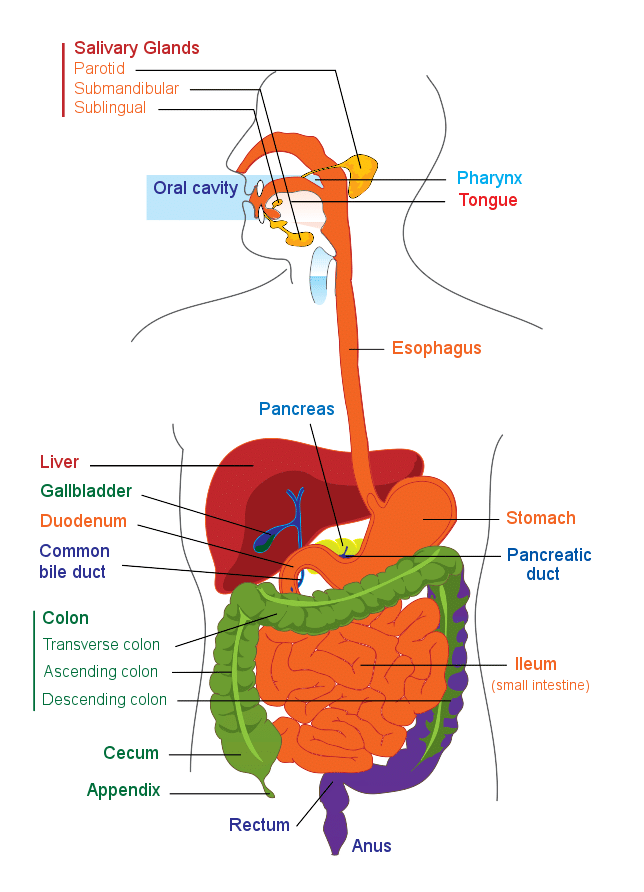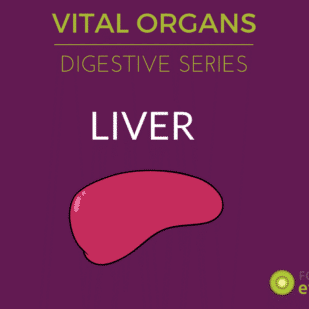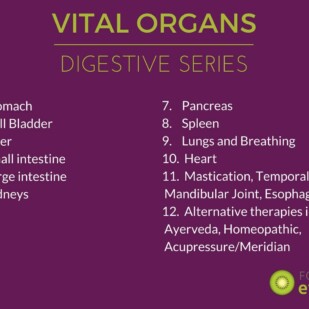This is part of a series on the Digestive System. Please see our other articles in the Vital Organ Series here.
The Abdomen has Four Quadrants
Upper left, Lower Left, Upper right and Lower Right. The location of the stomach is in the left upper quadrant of the abdomen as well as the lower thoracic cage. The highest point can be as high as the fifth rib. It is found below the liver on the left. It lies above the transverse colon except where it exits into the duodenum.
Blausen.com staff (2014). “Medical gallery of Blausen Medical 2014”. WikiJournal of Medicine 1 (2). DOI:10.15347/wjm/2014.010. ISSN 2002-4436.
Part of a System
The stomach is a saclike expansion of the alimentary canal of a vertebrate below the esophagus and above the duodenum . It is a simple curved sac with an outer serous coat, a strong complex muscular wall that contracts rhythmically and a mucous lining membrane that contains gastric glands.
The Layers of The Stomach
The stomach changes size and shape according to its position in the body and the amount of food inside. The stomach is about 12 inches long and 6 inches wide at its widest point. The stomach capacity is about 1 quart in an adult.
The stomach is composed of five layers. Beginning from the inside and working our way out the innermost layer is called the mucosa. Stomach acid and digestive juices are made in the mucosa layer. The next layer is called the sub mucosa. The sub mucosa is surrounded by a layer of muscle that moves and mixes the stomach contents. The next two layers are the subserose and the serosa, They are the wrapping for the stomach.
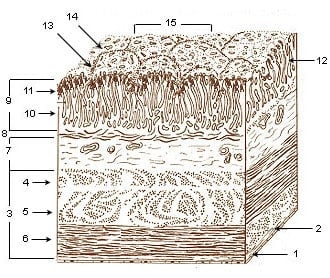
Gastric Acid
The stomach is usually a highly acidic environment due to gastric acid production and secretion which produces a luminal pH range*, usually between 1 and 4, depending on the species, food intake, time of day, drug use and other factors. This environment is able to break down large molecules (such as from food) to small ones so that they can eventually be absorbed by the small intestine. The stomach can produce and secrete about 2 to 3 liters of gastric acid per day with basal secretion levels being typically highest in the evening for humans.
*Pepsinoagen is secreted by chief cells and turns into pepsin under low pH conditions and is a necessity in protein digestion.
Other Stomach Functions
Absorption of vitamin B 12 from the small intestine is dependent on conjugation to the glycoprotein called* intrinsic factor which is produced by parietal cells of the stomach.
Other functions include absorbing some ions, water and some lipid soluble compounds such as alcohol, aspirin and caffeine. And of course the stomach is a food storage cavity.
The stomach can refer pain up into the esophagus into the chest, into the cardiac region of the body and into the back directly posterior to its location.
Relieving Regional Stomach Pain Yourself
Most of us naturally move our hands over the parts of our body that give us pain and discomfort- warming up cold areas, pinching tight muscles, rubbing out muscle aches- but when your discomfort is deeper in your body it is a bit more challenging to access and offer relief. You may also believe that relief can only be found under someone else’s hands – so we don’t even try to work on ourselves.
In this series I will show you some very simple and effective self massage techniques that will not only provide you with some relief but will introduce you to your own body perhaps in a meaningful way. And taking the time for self care has benefits beyond the immediate experience. I recommend watching the video all the way through- then reading the steps. Find yourself a quiet, comfortable place to lay flat on your floor- feel free to turn on some relaxing music and take your time.
As with any self care technique do not do anything that will hurt yourself. Listen to your body’s messages- if something is too painful refrain from this activity and seek professional medical care or advice.
Below is a simple video that one can follow to palpate the stomach successfully and alleviate pain in that region and any referral region.
Abdominal Massage Steps
- Lie down on your back with your legs bent and feet flat on the floor.
- The stomach is easily palpated when it is full, however, it should be empty or nearly empty when touching it.
- Bring either hand up to the sternum between the sternum and the umbilicus (belly button). Use a gentle gathering motion with soft curved fingers moving counterclockwise.
- Moving in a counterclockwise pattern begin moving the gentle gathering motion strokes over to the left just under the left ribs, near the center of the body under the sternum.
- With your hand see if you can reach just a bit under the ribs pulling down with soft curved fingers.
- You can lie on your side and accomplish these manipulations as well.
